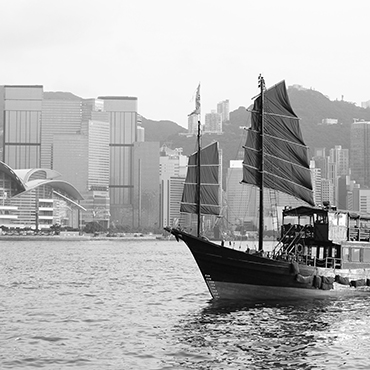INDIA'S POLLUTION CRISIS
In New Delhi, millions of Indian citizens are affected by severe air pollution that is caused by industrial, commercial, and agricultural carbon dioxide release. Children have been given masks and a scheme to limit the number of cars on the road (based on license plate numbers) has been put into effect by authorities in an attempt to lessen pollution. While the city has been dealing with worsening conditions over the past four years, this past October was particularly deadly due to controlled burns by farmers in agricultural areas surrounding the city to clear the land for new crops. This air pollution, in turn, is having serious negative health effects for residents, increasing the likelihood of diabetes, hypertension and respiratory problems, especially among young children. (India Today, October 31, 2019)
THE ZAMBEZI RIVER TURNS DEADLY
Climate change is affecting the size of one of Africa's main international rivers, causing crop failure and flash floods in the countries where it runs. The river, which flows through Zambia, Angola, Namibia, Botswana, Zimbabwe and Mozambique, brings vital water for agriculture and energy to all of these countries. But as the region continues to experience droughts and water scarcity, the diminished amount of water now available from the Zambezi has contributed to crop failure, reduced the productivity of hydroelectric projects, and resulted in a drop in fish stocks. The trendline is ominous; over time, the water shortages will force farmers who are unable to grow food to move, lead to food shortages, wipe out villages, and reduce the electricity for nearby cities. (Bloomberg, October 30, 2019)
THE KOREAN PENINSULA'S PIGGY PROBLEM
Pigs suspected of crossing from North Korea into South Korea has been found to have African Swine Flu, a viral and highly infectious disease with a 100% fatality rate in swine herds. South Korea has taken action, culling any pigs found infected – a figure that now numbers close to 145,000. While the disease cannot be contracted by humans, the average South Korean consumes significant amounts of pork - 27 kg a year, according to 2018 data. Roughly 2/3rds of the country’s pork consumption is from domestic sources, and the flu could wreak havoc on local production.
More worrisome, however, is the source of the pigs themselves: North Korea. The DPRK has halted any contact with South Korea and the United States since the failed Hanoi Summit earlier this year, leaving Seoul to combat the disease on its own. Moreover, if the disease continues to spread in the North, it could cause a meat shortage in a country already short on food. (Reuters, September 16, 2019; Wall Street Journal, October 9, 2019)
THE "RESOURCE CURSE" COMES TO GUYANA
In the past year, energy giant ExxonMobil announced that oil had been found off the shore of Guyana, and that production would begin in 2020. For the South American nation of 800,000 people, this explosion of accessible resources could become a "make or break" economic moment their economy, depending on whether proper risk management and regulatory procedures are put in place to manage the nation’s sudden petro-wealth. The recurring risk of mismanagement and corruption is often referred to as the "resource curse," and a number of other oil rich nations have already succumbed to the trend. Nigeria's experience, in particular, is a cautionary one; there, have disrupted oil production and caused economic turmoil, leading to a decline in investment in the country as a whole. (RigZone, October 8, 2019)
THE DANGERS OF CHINESE DAMS
The number of Chinese-manufactured dams along the Mekong River in Laos has significantly grown in the past couple of years, with still more planned on the river's tributaries. The increase in these hydroelectric projects is creating an economic noose around Laos, plunging the country further into debt to China and causing a surge of displaced citizens, as well as interrupting vital migration patterns for thousands of fish species. The construction of the dams also does irreparable damage to the Lower Mekong delta, which provides the majority of the Southeast Asian peninsula's agricultural products. Without the steady stream of silt and nutrients from sediment upstream, the delta will become less fertile over time, decreasing food production and revenue for both Laos and Thailand. (New York Times, October 12, 2019)
Want these sent to your inbox?
Subscribe
Resource Security Watch No. 22
Related Categories:
Energy Security; Human Rights and Humanitarian Issues; Resource Security; Africa; China; India; South Asia; Southeast Asia

